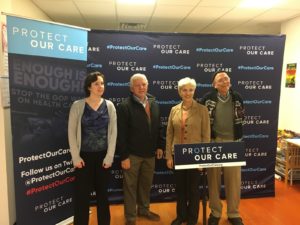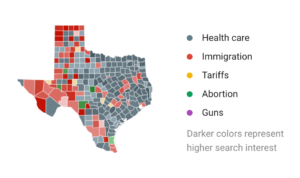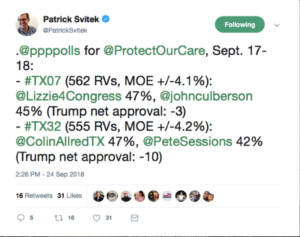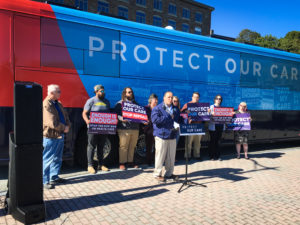Local Health Care Advocates Join Protect Our Care to Call for an End to GOP Attacks on New Yorkers’ Health Care
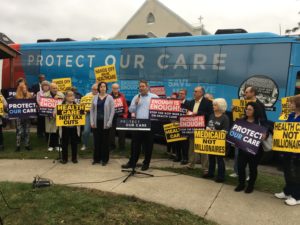
View photos of today’s event here.
BINGHAMTON, NEW YORK- This afternoon, Protect Our Care’s nationwide bus tour arrived in Kingston to call attention to the Republicans ongoing war on health care care. Headlined by cancer survivor Laura Packard and Ron Deutsch, Executive Director of the Fiscal Policy Institute, the event highlighted the actions Republicans are taking to harm New Yorkers’ care and called on Republicans to work instead to protect our health care.
“I’m alive because of the Affordable Care Act,” said Packard. “I’m a stage four cancer survivor and I’m on this tour to defend our attacks against the GOP. President Trump may have blocked me on Twitter, but he can’t stop me and the American people from fighting to protect our care.”
Her sentiments were echoed by Deutsch and Jim Carr of the New York State Alliance for Retired Americans, who noted the importance of health care programs:
“Enough is enough. Everybody, regardless of their income level, should be able to access affordable health care,” said Deutsch. “Right now the House Republican budget is looking at slashing $5 trillion over the next decade for a variety of programs and services, not the least of which is Medicaid and the Affordable Care Act… We’ve got about one in four families receiving Medicaid coverage. People are relying on these programs to get by.”
“Seniors need Medicare, which is under attack,” said Carr. “Medicare is the number one, most efficient program of any health care program we have in the country.”
And their significance was made crystal clear by local residents Linda Quilty and Mike Hermann:
“I’m just a grandmother who has a granddaughter with disabilities,” said Quilty. “She was born as what they call a ‘floppy baby,’ she just didn’t move… Now, she’s eight years old and she’s doing wonderfully well. She’s still has problems, but she’s gotten extensive therapies through Medicaid-assisted groups…. My concern is – what happens to these babies who don’t get the assistance that she has had? Where do they go without all of that help?”
“In 2016, I had a heart attack and needed bypass surgery, and there were complications after the surgery. I had over $200,000 in medical bills,” said Hermann. “My Affordable Care Act policy saved me from financial ruin. All essential benefits were covered. No lifetime caps, no annual caps.”
At today’s event, Binghamton residents, health care advocates, elected officials and members of Protect Our Care detailed the numbers ways in which Republicans have attacked health care, and how these actions have cut coverage and increased costs for New Yorkers. Because of the Republican repeal-and-sabotage agenda:
- New Yorkers will see their premiums rise by an average of 8.6 percent next year. It’s expected that 40 year old New Yorkers in NY-22 could face paying an extra $630 for marketplace coverage because of Republican sabotage.
- In New York, out of pocket costs for older people could have increased by as much as $3,679 by 2026 if the House-passed American Health Care Act had become law.
- New York expanded Medicaid under the ACA and the 143,000 New Yorkers have gained coverage because of this program would find their care at risk if the law were repealed.
- 872,000 New Yorkers who have obtained health insurance through the ACA marketplace could lose their coverage if a judge sides President Trump and the GOP in their lawsuit; and protections for 8,398,900 New Yorkers living with a pre-existing condition would be in jeopardy.
- Hundreds of billions of dollars have been cut from Medicare.
- Dozens of hospitals in rural areas have closed, exacerbating the care and coverage gaps that exist for families in America’s rural communities.
- Representative Claudia Tenney voted for and passed a health care repeal bill that would cause 23 million people to lose coverage and gut protections for people with pre-existing condition; voted for a budget amendment that would cut Medicaid by $700 billion over ten years, $114 billion in a single year alone; voted for a tax scam that doubled as a sneaky repeal of the Affordable Care Act by kicking 13 million people off of their insurance and raising premiums by double digits for millions more.
Tomorrow, “Care Force One” will head to Burlington County, New Jersey. For more information, please visit https://protectourcarebustour.com/.


